Freedom of speech and a crowded corner in Claremont
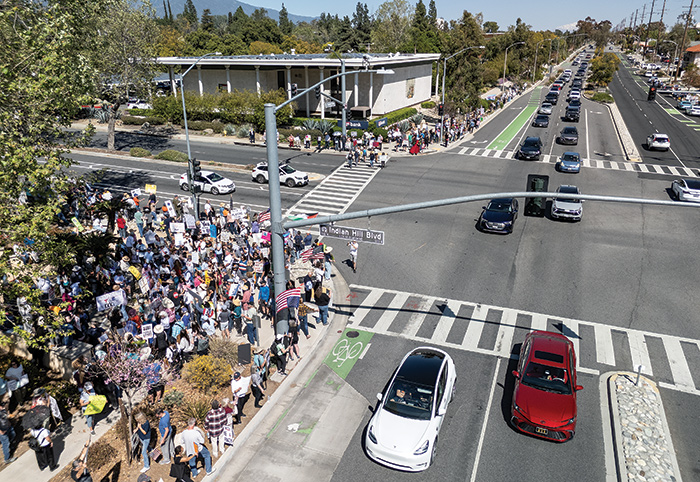
As part of nationwide anti-Trump and Musk rallies on Saturday, April 5, more than 300 local protesters gathered at the familiar intersection of Indian Hill and Foothill Boulevards in Claremont. The peaceful two-hour demonstration featured signs and speeches critical of a wide range of Trump administration actions. Courier photo/Peter Weinberger
Americans have never been shy about the importance of free speech, or the right to agree — or disagree — with others’ opinions. How many times have we said that?
I was reminded of this principle while covering the anti-Trump protest in Claremont on Saturday, held at the well-known intersection of Foothill and Indian Hill boulevards. Afterward, I posted six photos from the event on the Courier website and our Facebook page.
By any measure, this was a textbook example of a rally against government overreach. Hundreds of peaceful, passionate protesters gathered to vocalize their displeasure with President Trump’s executive actions since taking office in January. It was classic Claremont — civil, spirited, and deeply engaged.
This particular intersection has long been a hotspot for demonstrations of all kinds. Its layout makes it unique — protesters can shift from corner to corner, holding signs and waving to a steady stream of honking cars. That’s part of what gives these events so much visibility and energy.
So how many attended?
I’ve covered many rallies at this location, often using a small camera drone to get aerial shots. The view from above is far more accurate when estimating crowd size — it gives a clearer view of spacing, especially when signs block visibility everywhere.
On Saturday, I flew the drone at 2:20 p.m., about 20 minutes after the event started. By that time, the area was packed. Protesters lined the sidewalks, careful to stay out of the street, and spilled down the boulevards in both directions. I don’t think I’ve ever seen the intersection so crowded.
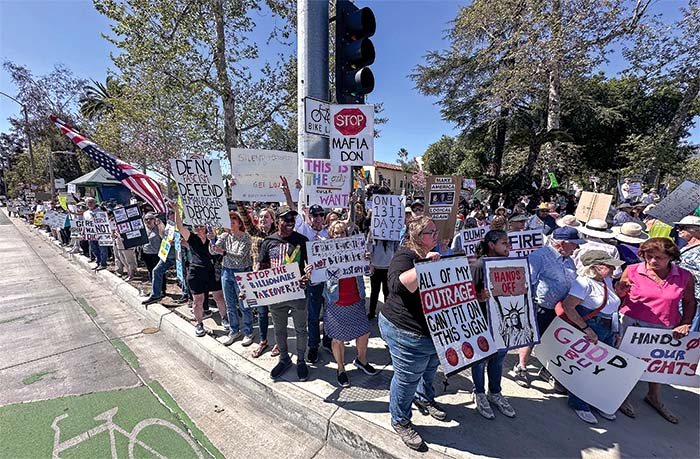
The rally occupied all four corners of Foothill and Indian Hill Boulevards with over 500 hundred participating. Courier photo/Peter Weinberger
Still, the sidewalks aren’t particularly wide, and this wasn’t a stadium or a park with defined seating — it was a bit of an organized hodgepodge. It’s also important to note because I didn’t launch the drone until 20 minutes after the rally began, it’s very possible the crowd was even larger at its peak around 2 p.m. People may have come and gone, and the initial surge likely brought the highest numbers. That’s part of the reason I estimated the crowd at more than 500.
Some folks claimed it was closer to a thousand. I get it — if you were in the middle of it, it probably felt that way. But I also believe people often overestimate crowd sizes, especially when politics is involved. It’s just human nature.
Role of social media
As expected, this event became a big story — and photography was the best option to illustrate what happened. That meant posting on our site and, of course, on Facebook (Meta). The post received around 7,200 views and nearly 200 comments. Reactions ranged from supportive to hostile.
I had to block several users who seemed more interested in trolling than engaging. I did my best to play peacemaker — reminding folks to focus on the event, not on attacking each other. Still, I had to delete about 10 comments that crossed the line into personal or aggressive territory.
About 65% of the comments were critical of something, but fewer than 10% were truly inappropriate. Then, Facebook stepped in.
By Wednesday — four days after the event — I noticed something strange. The comment count dropped from 196 to 144. A message appeared at the bottom of the comments: “Most relevant is selected, so some comments may have been filtered out.” That’s Facebook-speak for you just got censored.
Here’s the kicker: as the post’s owner, I had no idea what was removed, who was affected, or why it happened. No notification. No transparency. Just — gone.
To me, that goes well beyond Facebook’s role. At the very least, they should notify page admins when and what content is removed. Otherwise, readers and posters alike are left with a distorted sense of public sentiment. Too much anti-Trump rhetoric? Let’s just delete 50 comments to “balance” things out.
In the end…
These Hands Off! rallies were a powerful example of what free speech looks like in practice — even for those who don’t care much about that right. Social media can be a vital tool in helping local news reach more people. When you combine readers from print, our website, the newsletter, and social media, around 17,000 people saw Courier coverage of the protest.
That’s a huge number for a community-based newsroom like the Claremont Courier.
Here’s the question I keep coming back to: How do we ensure information remains fact-based when the very platforms we rely on are silently deleting a quarter of the conversation?



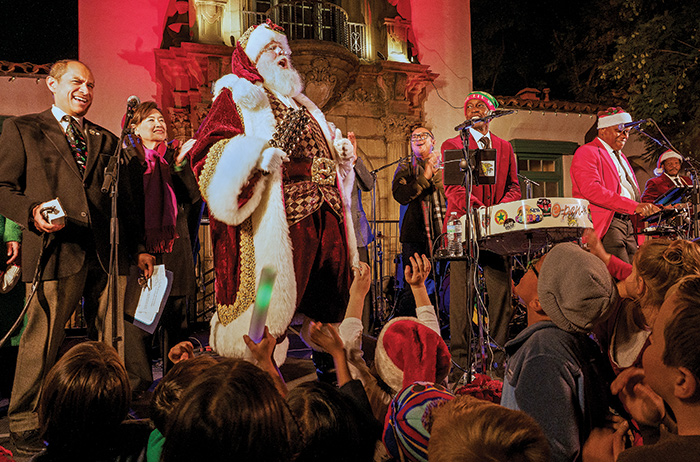
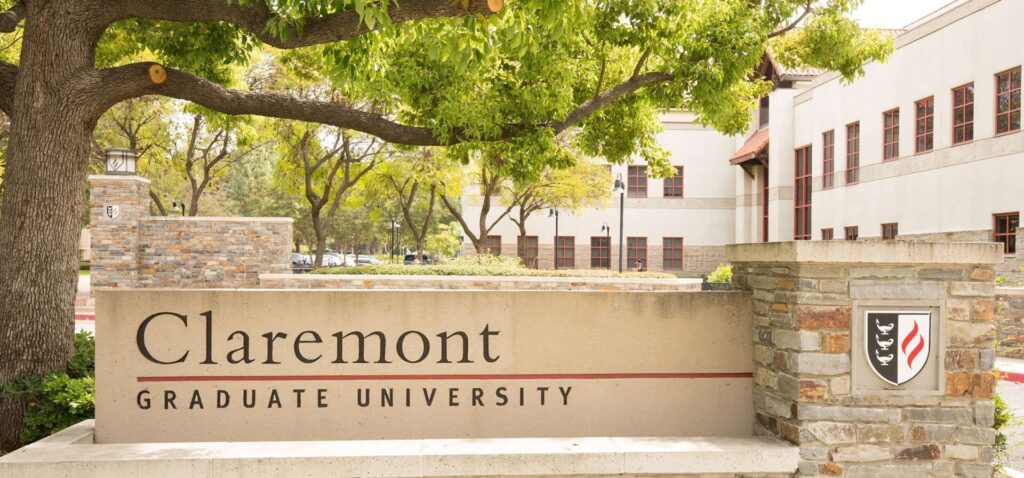
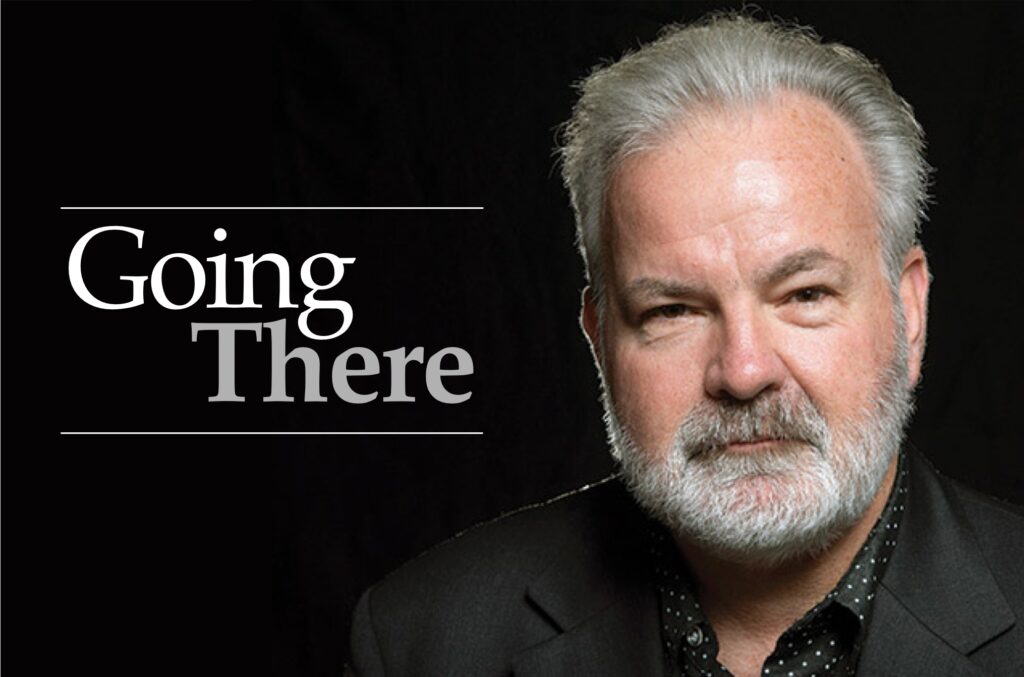




0 Comments